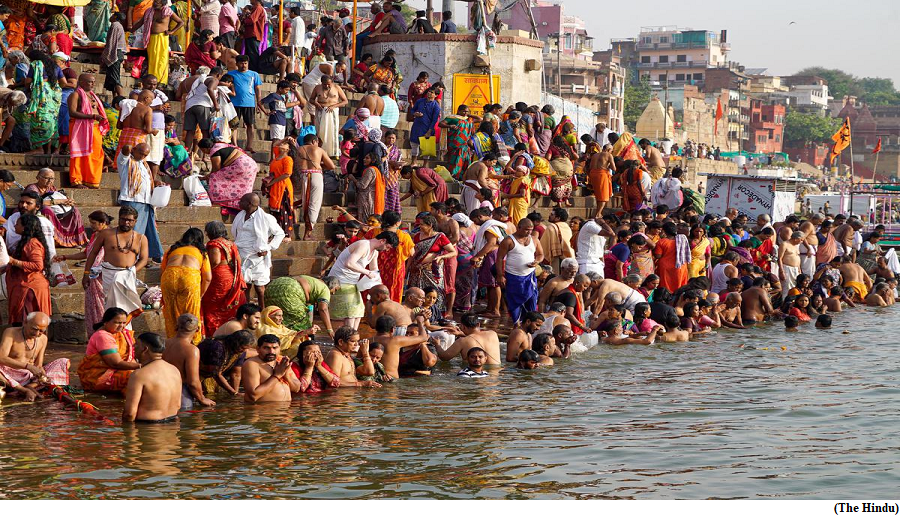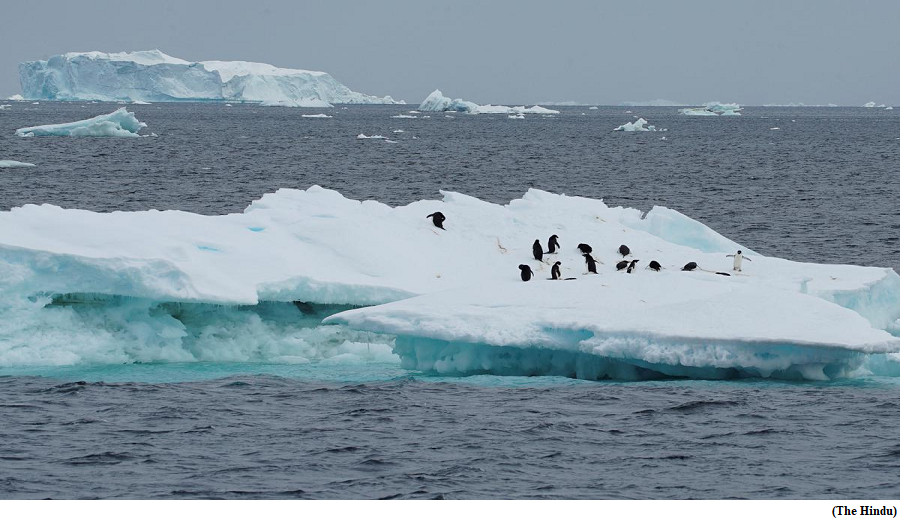Reviving a ‘dead’ river, a cultural event to celebrate legacy of Yamuna (GS Paper 1, Geography)

Why in news?
- The Yamuna, a river that environmentalists consider ecologically dead in Delhi, will now be the focus of a cultural push to renew India’s civilisational and socio-religious connect with its waterbodies.
Riverine Cultures of India:
- In September, the Indira Gandhi National Centre for the Arts (IGNCA) will host a cultural programme on the banks of the river in Delhi, under its special project, ‘Riverine Cultures of India’ that began in 2018.
- The highlight of the event will be a short festival of films on waterbodies, shot by children from across the country.
- The programmes will include a photo exhibition comparing the Yamuna of today with what the river was like 50 years ago; symposia on various aspects such as ecology and conservation of India’s rivers and their importance in the country’s heritage; and an exhibition themed on 15 ghats across the country in Sanjhi or paper stencil art.
Rivers in focus:
- The larger project is focusing on six rivers right now: Ganga, Yamuna, and Sindhu in the north; and Krishna, Godavari, and Cauvery in the south.
- The project envisages festivals celebrating rivers in different cities, a study on these rivers in their contemporary context, and workshops along the banks involving environmentalists, cultural historians, anthropologists and folklorists.
Why Yamuna?
- Sources in the Ministry of Culture said that the government has tasked the IGNCA to conduct the cultural festival as a pilot for a bigger project on the Yamuna.
- The Yamuna’s confluence with the Ganga and the mythical Saraswati at Triveni Sangam in Prayagraj is one of the country’s most important pilgrimage spots for Hindus.
- However, the river had been declared “almost dead” by the Central Pollution Control Board (CPCB) in 2015 citing untreated waste flowing into it from several cities along its banks.
- The definition of a river is that it must have life, which is measured by its capacity to dissolve oxygen. The dissolved oxygen content in the Yamuna as it passes through Delhi is zero.
Pushkaralu festival returns to the Ganga after a gap of 12 years
(GS Paper 1, Culture)
Why in news?
- The 12-day Pushkaralu festival celebrated by Telugus recently started in Varanasi.

Details:
- The festival, during which pilgrims worship the Ganga and their ancestors, is being organised in Varanasi after a gap of 12 years.
- It is the second event, after the Kashi-Tamil Sangamam, being organised in Varanasi which will witness a large number of South Indians visiting the city.
What is the legend behind the festival?
- As per the legends, after severe penance a devotee Pushkara was blessed by Lord Shiv with the ability to live in water and purify holy rivers.
- On the request of Guru Brihaspati (Jupiter) in view of his abilities, Pushkara decided to enter 12 sacred rivers: Ganga, Narmada, Saraswati, Yamuna, Godavari, Krishna, Kaveri, Bhima, Tapti,Tungbhadra, Sindhu and Pranhita.
- Each river has its zodiac sign. The river for each year's festival is decided as per Brihaspati's travel from one zodiac sign to another.
Seven worst years for polar ice melting in past decade: study
(GS Paper 3, Environment)
Why in news?
- Scientists report that the seven worst years for polar ice sheets melting and losing ice have occurred during the past decade, with 2019 being the worst year on record.
- Combining 50 satellite surveys of Antarctica and Greenland taken between 1992 and 2020, the international team of researchers have found that the melting ice sheets now account for a quarter of all sea level rise, a five fold increase since the 1990s.

Key Highlights:
- In their study, the researchers found that earth’s polar ice sheets lost 7,560 billion tonnes of ice between 1992 and 2020, which is equivalent to an ice cube that would be 20 km in height.
- They also found that the polar ice sheets have together lost ice in every year of the satellite record, and the seven highest melting years have occurred in the past decade.
Melting year:
- The satellite records showed that 2019 was the record melting year when the ice sheets lost a staggering 612 billion tonnes of ice.
- The loss, driven by an Arctic summer heatwave, led to record melting from Greenland peaking at 444 billion tonnes that year.
- Antarctica was found to have lost 168 billion tonnes of ice, the sixth highest on record, due to the continued speedup of glaciers in West Antarctica and record melting from the Antarctic Peninsula.
- The East Antarctic ice sheet was found to remain close to a state of balance, as it had throughout the satellite era.
- Melting of the polar ice sheets has found to cause a rise of 21 millimetre (mm) in global sea level since 1992, almost two thirds, or 13.5 mm, of which has originated from Greenland and one third, or 7.4 mm, from Antarctica.
Fivefold increase:
- The researchers say that there has been a fivefold increase in melting since the early 1990s. While ice sheet melting accounted for only a small fraction (5.6% of sea level rise), they are now responsible for more than a quarter (25.6% of all sea level rise).




